Engaging Minds with Joy: Practical Teaching Techniques
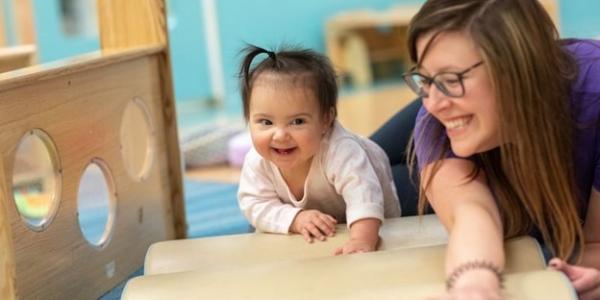
Educating Young Children’s Fall 2025 issue focuses on joyful, engaged teaching and learning. NAEYC members can access the issue through their member portal to learn about creating engaging and impactful learning experiences for young children.
In this blog, educators Patricia Sinclair, Melanie Brooks, and Hayley McHugh describe six practices educators can implement to prioritize joy in early learning settings.
Intentional early childhood educators weave joy into daily routines and the learning environment. They infuse it as they attend to each child’s unique needs and support all areas of development (Zosh et al. 2018). It is visible in smiles, laughter, play, and meaningful connections. Both thoughtfully designed experiences and unplanned moments can foster joy. Based on our experiences working with children in early childhood settings and coaching educators and center leaders, we share images and descriptions of six practices we use. We hope they inspire you to plan for and support joyful, engaged teaching and learning in your setting.
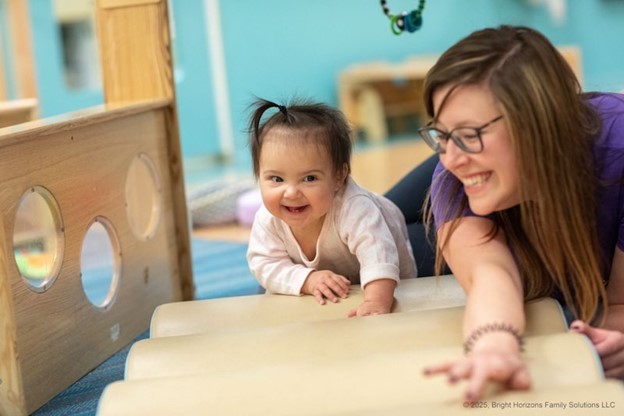
Smiling and Laughing
When educators smile and laugh with children, they help build positive relationships and foster a joyful learning environment. Smiling at someone can activate their own smile to light up (e.g., Kircher et al. 2013), and laughing and smiling can play an important part in learning and development. Greet children with a smile when they first enter your room or program. Tune in to opportunities to smile and laugh with them throughout the day.
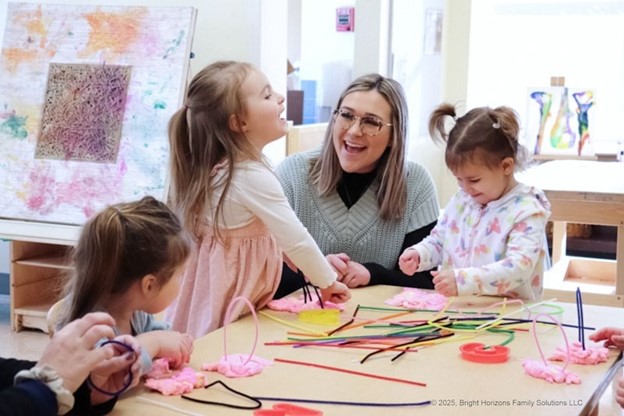
Playing and Being Silly
Play promotes “self-regulation, language, cognitive, and social competencies as well as content knowledge across disciplines” (NAEYC 2020, 9). Educators can engage children in playful interactions in many ways. For example, playing peekaboo is one of the first ways many adults participate in play and being silly with very young children. Games like this can foster children’s development and can be tailored to individual children’s interests, attention, and experiences (Gillespie & Greenberg 2017). In addition, children can connect with each other through silly gestures, sounds, words, jokes, and riddles. The ways children engage in these experiences give educators information about their development, helping to guide future planning. Try adding silliness to routine tasks, using puppets, or inviting children to make up jokes.
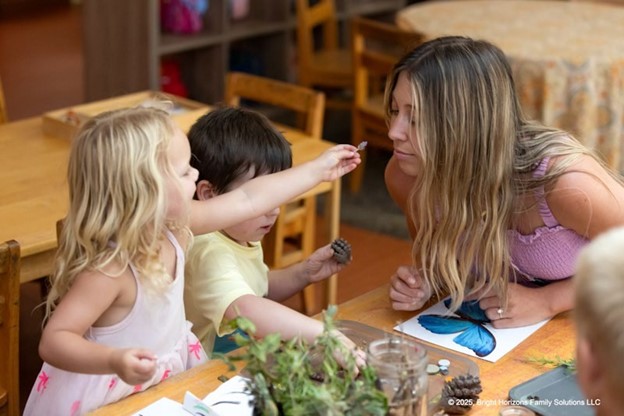
Pausing and Being Present
Joy can help adults focus on how they feel and tune in to what is happening around them, enhancing their focus, attention to details, and connection with others (Karjalainen et al. 2019). To truly pause and be present with children, educators need to slow down. This can be challenging in a busy early learning setting, but it is essential for supporting children’s growth and learning. Practice being present by pausing, making eye contact, and joining children in the discoveries they make. (See the Summer 2025 issue of Educating Young Children for ways educators can practice self-care and support their own well-being.)
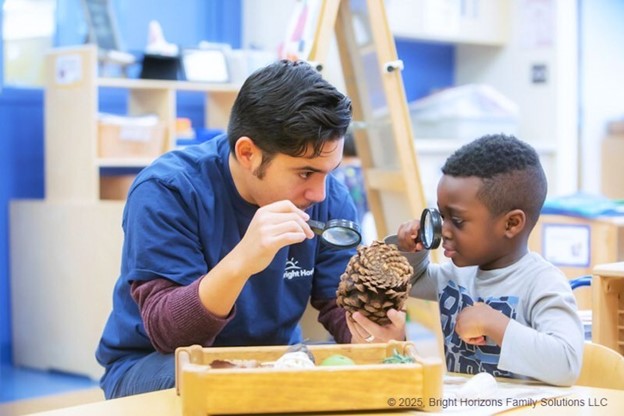
Appreciating and Wondering
Wonder refers to “children’s continued engagement as they explore, gather information, test hypotheses, and make meaning” (NAEYC 2020, 9). When educators guide children through activities such as going on a bug hunt, examining artwork, or cooking, they offer children opportunities to experience wonder. These types of experiences help children ask and answer questions that interest them, explore possibilities, and engage in critical thinking. They also support children’s physical and emotional development, such as when children pour and mix ingredients and feel excited about tasting the final product (Karjalainen et al. 2019). Try modeling your own curiosity, and acknowledge children’s curiosity too.
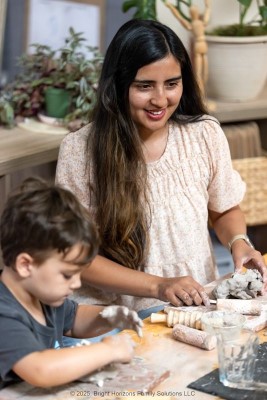
Delighting and Engaging Multiple Modes
Another component of play is delight, or “the joy and laughter associated with the pleasure of the activity, making discoveries, and achieving new things” (NAEYC 2020, 9). One way to experience delight is through engaging multiple senses and modes of communication, which helps children learn about and make sense of their world (Dionne-Dostie et al. 2015; McCormick et al. 2023). For example, sensory play gives children opportunities to learn about the properties of matter—mass, volume, and dimension. It also helps children develop fine motor skills they need for tasks such as writing. Children can express ideas and emotions in different ways, including drawing, speech, and movement. Offer children multiple materials and ways to participate, such as tracing sandpaper letters with their fingers or drawing or acting out their favorite parts of a story.
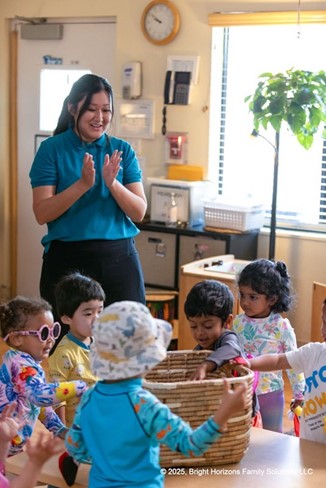
Dancing and Moving
In developmentally appropriate learning settings, educators “strive to provide opportunities for physical activity throughout the day, including the use of learning activities that incorporate movement” (NAEYC 2020, 24) as a part of a comprehensive curriculum so that “each child attains individualized goals across all domains” (22). Encourage children to move throughout the day—and join in. You don’t have to be a professional athlete or dancer: Your participation fosters a joyful environment.
Conclusion
As stated in the NAEYC position statement on developmentally appropriate practice, “Educators who engage in developmentally appropriate practice foster young children’s joyful learning and maximize the opportunities for each and every child to achieve their full potential” (NAEYC 2020, 5). In our own work, we have found that joy is the source of meaningful learning and connection. Through both intentionally planned and unplanned experiences, educators can create an environment where every child grows, learns, and feels seen, valued, and inspired.
Reflection Questions
- How do you prioritize children’s joy in your setting?
- How do you know when you and the children in your setting are engaged in joyful learning? What does it feel like, sound like, and look like?
- Look for joyful moments and capture them in photos.
- How often do you smile, laugh, play, act silly, sing, and move in your setting each day?
- How often do you pause and delight in moments with children?
- How can you prioritize this during a busy learning day?
Suggestions for Early Childhood Leaders
To support joyful learning, program administrators, professional development trainers, and higher education professionals can implement the following strategies.
- Reflective practices: Encourage reflective exercises that help program leaders and the educators they support to identify joyful moments. Ask educators what questions they have or supports they need to sustain joyful learning for children and themselves.
- Modeling: Invite educators to demonstrate joy-infused teaching in early education settings and case study scenarios.
- Journal or documentation board: Provide a space where program staff or learning community members can add photos and notes documenting joyful learning in their settings.
- Document joyful learning in your own setting: Recognize and provide examples of joy during learning experiences and routines.
References
Dionne-Dostie, E., N. Paquette, M. Lassonde, & A. Gallagher. 2015. “Multisensory Integration and Child Neurodevelopment.” Brain Sciences 5 (1): 32–57. doi.org/10.3390/brainsci5010032.
Gillespie, L.G., & J.D. Greenberg. 2017. “Rocking and Rolling: Empowering Infants’ and Toddlers’ Learning Through Scaffolding.” Young Children 72 (2): 90–93. naeyc.org/resources/pubs/yc/may2017/rocking-and-rolling-empowering-infants-and-toddlers.
Karjalainen, S., E. Hanhimäki, & A.-M. Puroila. 2019. “Dialogues of Joy: Shared Moments of Joy Between Teachers and Children in Early Childhood Education Settings.” International Journal of Early Childhood 51 (2): 129–43. doi.org/10.1007/s13158-019-00244-5.
Kircher, T., A. Pohl, S. Krach, M. Thimm, M. Schulte-Rüther, et al. 2013. “Affect-Specific Activation of Shared Networks for Perception and Execution of Facial Expressions.” Social Cognitive and Affective Neuroscience 8 (4): 370–77. doi.org/10.1093/scan/nss008.
McCormick, K.I., C. Uliassi, K. Barber, & K. Wieczorek. 2023. “Creating Multimodal Experiences to Engage All Students in Early Grade Classrooms.” Young Children 78 (3): 24–32.
NAEYC. 2020. “Developmentally Appropriate Practice.” Position statement. NAEYC. naeyc.org/resources/position-statements/dap/contents.
Zosh, J.M., K. Hirsch-Pasek, E.J. Hopkins, H. Jensen, C. Liu, et al. 2018. “Accessing the Inaccessible: Redefining Play as a Spectrum.” Frontiers in Psychology 9:1124. doi.org/10.3389/fpsyg.2018.01124.
Patricia Sinclair is a dedicated early childhood education leader, currently serving as education and quality manager at Bright Horizons, where she champions inclusive, research-based approaches to elevate program quality.
Melanie Brooks is senior manager of educational program support at Bright Horizons, leading a team dedicated to supporting centers nationwide with implementing the company’s pedagogical framework, Discovery Driven Learning.
Hayley McHugh is a vibrant instructional coach at Bright Horizons at The Forum, inspiring educators to elevate their teaching and spark joyful learning every day.